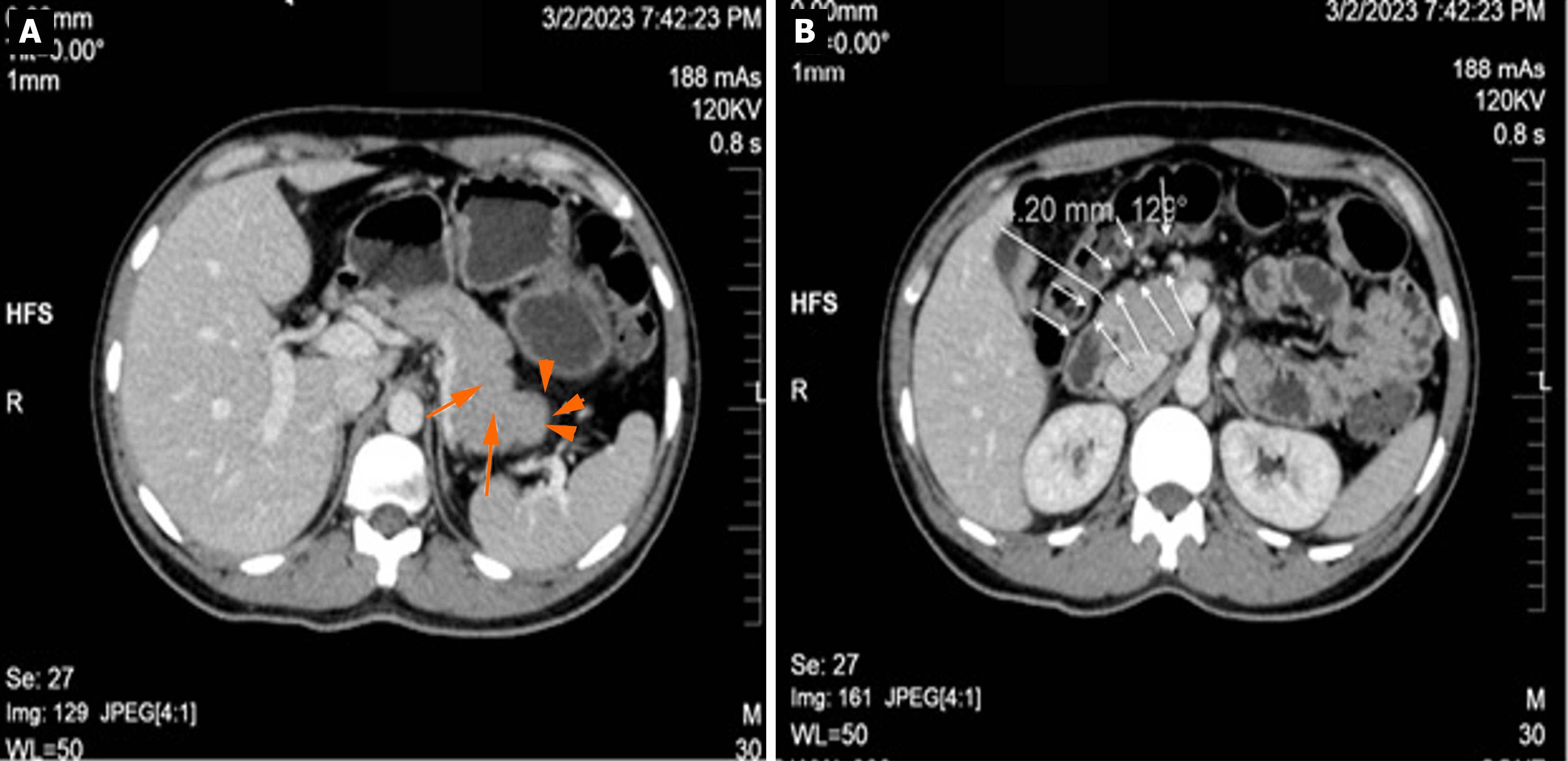Copyright
©The Author(s) 2024.
World J Gastroenterol. Feb 21, 2024; 30(7): 624-630
Published online Feb 21, 2024. doi: 10.3748/wjg.v30.i7.624
Published online Feb 21, 2024. doi: 10.3748/wjg.v30.i7.624
Figure 1 Computed tomography scan of the abdomen with contrast of a 34-year-old male patient who underwent a colonoscopy for 2-months history of bleeding per rectum and significant involuntary weight loss and was found to have severe pan-ulcerative colitis and eventually developed acute pancreatitis hours after colonoscopy.
The patient was admitted for 3-d and treated conservatively and experienced uneventful course. A: The pancreatic body and tail are homogenously enlarged (long arrows) with post-contrast enhancement, and faint peri-pancreatic fat stranding (short arrow); B: Shows the close proximity of the pancreas and the colon with distance of 4.2 mm (arrows). The close distance (4.2 mm) between the pancreas and colon wall may potentiate our assumption that direct mechanical trauma exerted to the colonic wall and transmitted to the pancreatic tissue is the precipitating cause of acute pancreatitis in the current case.
- Citation: Emara MH, Mazid U, Elshaer YA, Elkerdawy MA, Malik DF, Mahros AM. Trauma to the solid abdominal organs: The missed dark box of colonoscopy. World J Gastroenterol 2024; 30(7): 624-630
- URL: https://www.wjgnet.com/1007-9327/full/v30/i7/624.htm
- DOI: https://dx.doi.org/10.3748/wjg.v30.i7.624









